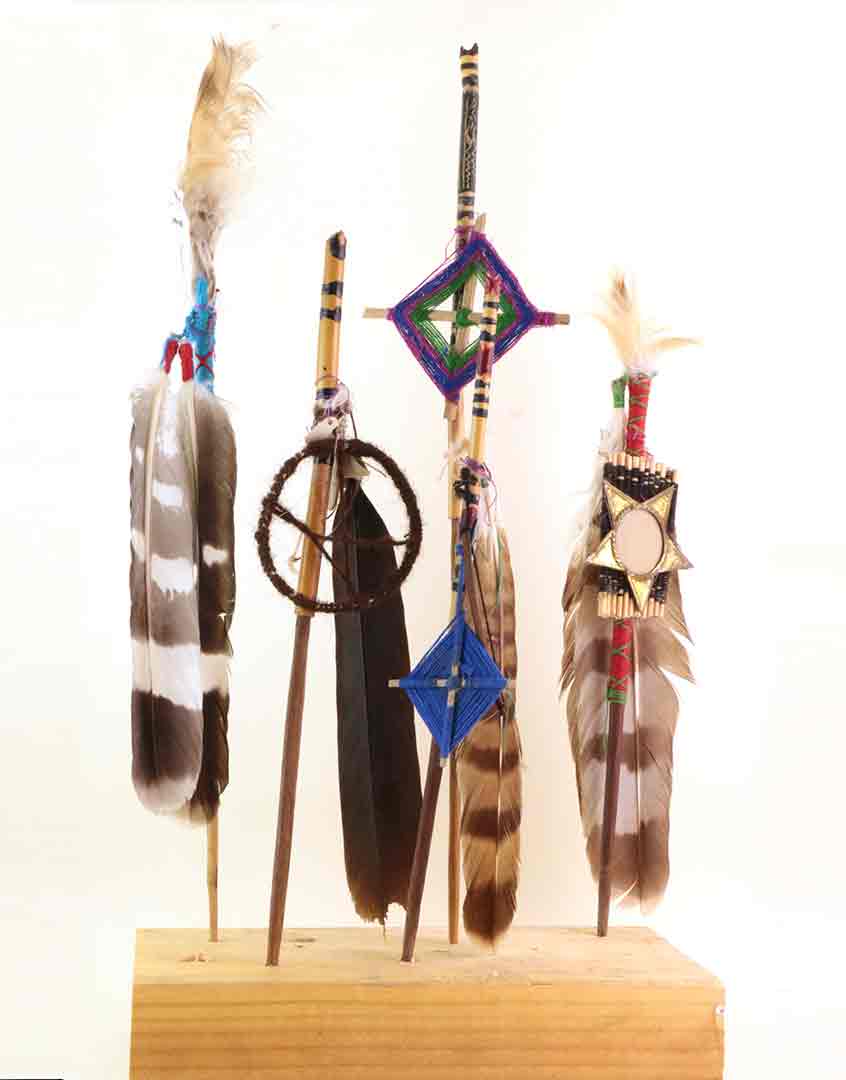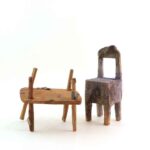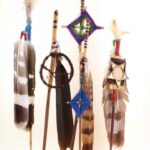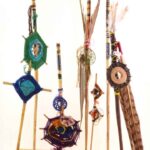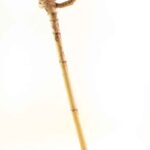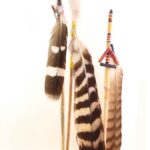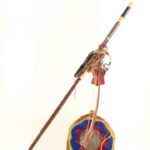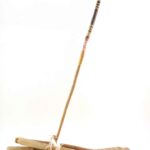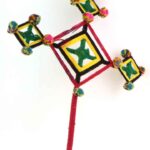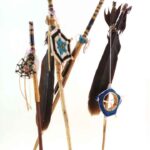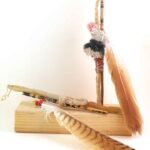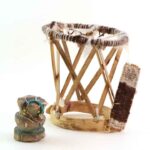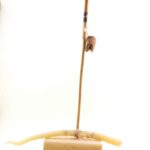The Huichol Indians live in Mexico’s Sierra Madre Occidental mountain range. Their culture is older than that of the Aztecs. They still produce corn, the staple crop, in a primitive manner, and much of their mythology is built around ritual and devotional exercises to ancestors who, through their supernatural feats, organized the world in which their children now live. For the successful realization of the vital celebrations to these ancestors, the Huichols have long had elaborate crafts. Most refer to the creation of the world as the artists envision it through their participation in ritual and devotional exercises and exalt and illuminate a complex network of Pre-Hispanic mythology.
For the Huichols, art is prayer and direct communication or participation in the sacred realm. It is meant to assure the good and beautiful life: health and fertility of crops, animals and people; the prosperity of the individual, the kin group, and the larger society. Art is functional as well as beautiful, especially those things created for the annual peyote pilgrimage, an event central to Huichol life. These pilgrimages for peyote take them several hundred miles to the northeast desert (Wirikuta – the sacred land). Men and women work for weeks creating his or her own prayer objects, ceremonial arrows and votive bowls. The powerful and vividly colored yarn paintings recreate many of the Huichol narratives and histories.
This collection of artifacts was begun by Mrs. Virginia Bacher in 1958 while living in Mexico. She was deeply impressed by the beauty of the objects themselves and the devotion of their makers. With the permission of the Huichols, she carefully collected these works from the beach after their use in ceremonies. Most are offerings sent to the deities residing in the ocean. Once used they no longer have value or purpose to their maker for the offering has reached its goal and then his or her communication with the deity is complete.

